Nala Sopara
Nala Sopara, formerly known as Sopara, is a town within the Mumbai Metropolitan Region. The town lies in the Palghar district of Maharashtra and is governed by Vasai-Virar Municipal Corporation (VVMC). Nallasopara railway station is part of the Western Railway Zone.
Nala Sopara | |
|---|---|
City | |
| Nickname(s): Sopara | |
 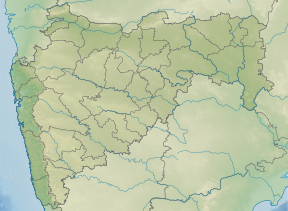 | |
| Coordinates: 19.4154°N 72.8613°E | |
| Country | India |
| State | Maharashtra |
| District | Palghar |
| Government | |
| • Type | Municipal Corporation |
| • Body | Vasai-Virar Municipal Corporation |
| Population (2011) | |
| • Total | 4.6 lakh |
| Languages | |
| • Official | Marathi |
| Time zone | UTC+5:30 (IST) |
| PIN | 401 203 |
| Telephone code | 02506 |
| Vehicle registration | MH48 |
| Vidhan Sabha constituency | Nalasopara |
Nala Sopara is accepted by scholars as the Shurparaka (lit. city of braves; Śūrpāraka) or Supparak of ancient India and was a busy trade centre and an important seat of Buddhism. It was one of the administrative units under the Satavahanas and is mentioned in the inscriptions of Karle, Nashik, Naneghat and Kanheri.
Climate
It has tropical climate, specifically a tropical wet and dry climate (Aw) under the Köppen climate classification, with seven months of dryness and peak of rains in July.
This moderate climate consists of high rainfall days and very few days of extreme temperatures. The cooler season from December to February is followed by the summer season from March to June. The period from June to about the end of September constitutes the south-west monsoon season, and October and November form the post-monsoon season. The driest days are in winter while the wettest days occur in July.
Between June and September, the south-west monsoon rains lash the region. Pre-monsoon showers are received in May. Occasionally, monsoon showers occur in October and November. The average total annual rainfall averages between 2,000–2,500 mm (79–98 in). Annually, over 80% of the total rainfall is experienced during June to October. Average humidity is 61-86%, making it a humid climate zone.
The temperature varies from 22–36 °C (72–97 °F). The average temperature is 26.6 °C (80 °F), and the average precipitation is 2,434 mm (95.83 in). The average minimum temperature is 22.5 °C (72.5 °F). The daily mean maximum temperature range from 28.4 °C (83.1 °F) to 33.4 °C (92.1 °F), while the daily mean minimum temperature ranges from 17.5 °C (63.5 °F) to 26.4 °C (79.5 °F). In winter, temperature ranges between 12–25 °C (54–77 °F) while summer temperature ranges from 36–41 °C (97–106 °F)
| Climate data for Nala sopara | |||||||||||||
|---|---|---|---|---|---|---|---|---|---|---|---|---|---|
| Month | Jan | Feb | Mar | Apr | May | Jun | Jul | Aug | Sep | Oct | Nov | Dec | Year |
| Average high °C (°F) | 28.5 (83.3) |
29 (84) |
31 (88) |
32.5 (90.5) |
33.2 (91.8) |
32 (90) |
29.7 (85.5) |
29.5 (85.1) |
29.8 (85.6) |
32.1 (89.8) |
32 (90) |
30.3 (86.5) |
30.8 (87.5) |
| Daily mean °C (°F) | 23.2 (73.8) |
23.7 (74.7) |
26.3 (79.3) |
28.3 (82.9) |
29.8 (85.6) |
29 (84) |
27.4 (81.3) |
27.1 (80.8) |
27 (81) |
27.8 (82.0) |
26.6 (79.9) |
24.6 (76.3) |
26.7 (80.1) |
| Average low °C (°F) | 17.9 (64.2) |
18.5 (65.3) |
21.6 (70.9) |
24.2 (75.6) |
26.5 (79.7) |
26.1 (79.0) |
25.1 (77.2) |
24.7 (76.5) |
24.3 (75.7) |
23.6 (74.5) |
21.2 (70.2) |
18.9 (66.0) |
22.7 (72.9) |
| Average precipitation mm (inches) | 0 (0) |
1 (0.0) |
1 (0.0) |
0 (0) |
10 (0.4) |
486 (19.1) |
870 (34.3) |
531 (20.9) |
350 (13.8) |
71 (2.8) |
6 (0.2) |
1 (0.0) |
2,327 (91.5) |
| Source: Climate-Data.org (altitude: 5m)[1] | |||||||||||||
History
Sopara
Sopara (by some identified with the Ophir mentioned in the Hebrew texts[2]) was an ancient port town and the capital of the ancient Aparanta. The ancient port of Sopara was an important port in western India, which operated under the celebrated port of Cambay. The site of this ancient town is located near the present day Nala Sopara. In ancient times, it was the largest township on India's west coast, trading with Mesopotamia, Egypt, Cochin, Arabia and Eastern Africa.
The Mahabharata and the Puranas state that the Śūrpāraka was reclaimed from the sea for the dwelling place of Parashurama and it became a tirtha for this reason.[3] The finding of the relics in a stupa and the rock edicts (the fragments of the 8th and 9th major rock edicts) of Ashoka in 1882[4] prove the importance of this port town from the 3rd century BCE[5] to the 9th century CE. The Buddhist text Mahavamsa (VI, 46,47) states that the first king of Sri Lanka, Vijaya sailed from Supparaka (Sopara) to Sri Lanka.[6] Ptolemy mentioned this town as Soupara, and it was a major commercial centre during his time[7] According to the Jaina writers, Shripala, a mythical king married Tilakasundari, daughter of king Mahasena of Soparaka. Jinaprabhasuri (14th century) in his Vividhatirthakalpa mentioned Soparaka as one of 84 Jaina tirthas (sacred places). He also mentioned about an image of Rishabhadeva located in this city till his time.[8]
The earliest reference occurs in Mahabharata as Shuparak. Suppara Jataka, believed to be of 6th century BC, talks of Sopara as a prosperous port trading with ports of S.W.Asia, Gujarat, Malabar and Srilanka, its experts (navigation pilots- bodhisattvas), and the seas that they voyaged across. From about third or fourth century BC precise historic data can be pieced together.
During primeval time, it was a colossal city of India western Ghats and was one of the major ports for foreign trading. India was trading with Arabia, Africa, Egypt and Rome via this Port. It has also been suggested that King Hiram of Tyre brought gold, precious stones and almug trees for Solomon from this city that was called land of Ophir.[9]
Excavations at Sopara
_03_Panorama_shot.jpg)
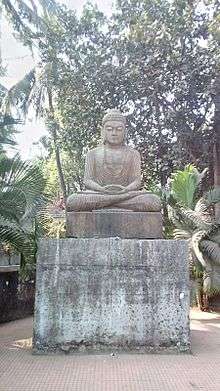
In April 1882, Bhagvanlal Indraji, a noted archaeologist, numismatist and epigraphist excavated at the Burud Rajache Kot mound in Merdes village, near Sopara. The ruins of a Buddhist Stupa was found. From the center of the stupa (inside a brick built chamber) a large stone coffer was excavated which contained eight bronze images of Maitreya Buddha which belong to the c. 8th-9th century CE. This coffer also enclosed relic caskets of copper, silver, stone, crystal and gold, along with numerous gold flowers and fragments of a begging bowl. A silver coin of Gautamiputra Satakarni (Satavahana) was also found from the mound. The Bombay Provincial Government presented the Sopara relics to the Asiatic Society of Bombay. The coins and the artifacts found during the excavations at the site of this ancient town can still be viewed in the Asiatic Society, Mumbai museum. In an old Muslim graveyard near Ramkund, the fragments of 8th and 9th major rock edicts of Asoka were found. These rock edicts can be viewed in the Chhatrapati Shivaji Maharaj Vastu Sangrahalaya, Mumbai. The site was re-excavated by M.M.Qureshi of the Archaeological Survey of India in 1939-40, when several stone lintels and two small stupas were found on the south side of the main stupa in addition to a few sherds of plain glazed ware of the Muslim period. Anwar Munshi (1972) found a number of Satavahana lead coins at Sopara.[10] In 1956, a fragment of 11th major rock edict was found from a coastal village, Bhuigaon.[11] During an excavation in 1993, a ring well, fragments of Roman amphorae red polished ware and glass (all belong to the early centuries of the Common Era) were found.
The ancient habitation site lies 2 km away from the stupa which overlooks the dry creek on the south and on the east opens to Thane creek. A large quantity of Islamic Glazed Ware, Black and Red Ware were found at the site. It seems that during the Early Historical period Sopara was located on the mainland facing Agashi island on the north and Bassein to the south. The backwaters between the mainland and the island were suitable for the movement and anchorage of ships. Gas and Nirmal villages were once part of the creek. A number of tanks and architectural remains arc noticed in the areas adjoining these villages. All the ancient relics were found in the area between the stupa and the creek. Up to the 19th century this creek was navigable and ships of 20 tonnes used to ply here. The significance of the architectural pieces becomes more important when the surface findings arc taken into account. The area around Bhatela pond is a landing place or bunder, where even remains of a Portuguese jetty and customs house are seen. Exploration (1994) in the adjoining area has yielded Red Polished Ware and Glazed Ware. The evidence is further corroborated by a joint excavation in 1993 carried out by the Archaeological Survey of India and the British Academy, Hyderabad where antiquities of the Early Historical period (Satavahana and Kashatrapa period) — lead and copper coins, semi-precious stone beads, small fragments of Northern Black Polished Ware, amphorae pieces and Islamic Blue Glazed ware were discovered. An earthen wall and a fourteen coarse stone wall with varying sizes of stone blocks were also encountered during this excavation.[10]
It is clearly evident from the archaeological and literary sources that Sopara was the main entrepot dating from the pre-Asokan period up to the 3rd century A.D. and again from 9th to 13th century A.D. There is no evidence of cultural remains from 4th to 9th century and it seems that during this period Sopara had lost its importance. The main cause for the decline of the ancient port of Sopara was due to the effect of siltation caused by a rise in sea level. Further near-shore and off-shore marine archaeological exploration and excavation would be helpful to ascertain the extent of the ancient port city.[10]
Sopara Edicts of Ashoka
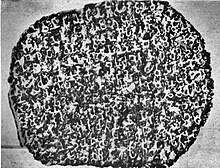
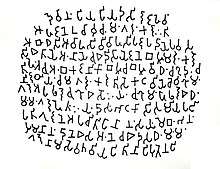
The following are translations of the fragments of the edicts found at Sopara by A.L. Basham and Romila Thapar.[12] In these edicts, Ashoka refers to himself as "Devanampiya"(Beloved of The Gods) and "Piyadassi" (The handsome one).
8th Major Rock Edict
"In the past, kings went on pleasure tours, which consisted of hunts and other similar amusements. The Beloved Of The Gods, the king Piyadassi, when he had been consecrated for 10 years, went to the tree of Enlightenment. From that time arose the practice of tours connected with Dhamma, during which meetings are held with ascetics and brahmans, gifts are bestowed, meetings are arranged with aged folk, gold is distributed, meetings with people of the countryside are held, instruction in Dhamma is given, and questions on Dhamma are answered. The Beloved Of The Gods, the king Piyadassi, derives more pleasure from this, than from any other enjoyments."
9th Major Rock Edict
"Thus speaks the Beloved of the Gods, the king Piyadassi: People practice various ceremonies in illness, at the marriage of sons and daughters, at the birth of children, when going on a journey on these and on other similar occasions people perform many ceremonies. Women especially perform a variety of ceremonies, which are trivial and useless. If such ceremonies must be performed they have but small results. But the one ceremony which has great value is that of Dhamma. This ceremony includes regard for slaves and servants, respect for teachers, restrained behaviour towards living beings, and donations to sramanas and brahmans - these and similar practices are called the ceremony of Dhamma. So father, son, brother, master, friend, acquaintance and neighbour should think,'This is virtuous, this is the ceremony I should practice, until my object is achieved.'"
Demographics
As of 2011 India census,[13] Nala Sopara had a population of 4.6 lakh.It shows Nalasopara's population grew to 4.6 lakh in 2011 from 2.3 lakh in 2001 census.It is one of the well-known suburbs in Mumbai. Males constitute 54% of the population and females 46%. Nala Sopara has an average literacy rate of 79%, higher than the national average of 74.04%: male literacy is 77%, and female literacy is 82%. In Nala Sopara, 13% of the population is under 6 years of age. Nala Sopara has witnessed steep rise of population due to relatively cheaper property rates in the Mumbai suburban area.
Among minority languages, Gujarati is spoken by 17.82% of the population and Hindi by 22.92%.[14]
Places of importance
Chakreshwar Mahadev Mandir
The Chakreshwar Mahadev Mandir (19.416982°N 72.798733°E) is a very ancient shrine of Lord Śiva.[15] This is a relatively small temple and is noted as the holy place where Svāmi Samarth performed dhyānam, pratiṣhṭha of a Rām Mandir near-by and blessed a śiṣhya who undertook a sajīva samādhi at this very place. The temple lies at one corner of the Chakreshwar lake in Nalasopara West.[16]
The era of construction is not clearly known. The temple was attacked by invaders and many of the idols were thrown into the nearby Chakreśvar lake. Many such old and rare idols were recovered later and put up in the current temple structure. The present structure is relatively new and small.
Schools
There are over 50 school's and college's in Nalasopara out of which Infant Jesus High School and KMPD High School are most famous and well recognized by the residents.
- Adarsh Education Society's Kapol School
- Agape Pre School
- Anjuman Khairul Islam Urdu High School
- Avdhoot Bhagwan Ram English High School
- Avdhoot Bhagwan Ram Vidyalaya
- B.N.Memorial High School
- Blooming Bud English High School
- Chandresh Lodha Memorial High School
- Divine Life School
- Divine Providence High School
- Evergreen High School
- GD Ideal High School
- Gurukul English High School
- Holy Angels School
- Holy Mary English School
- Holy Cross High School, Nirmal
- Indira Gandhi school & jr.college
- Infant JDivine Life School
- Infant Jesus High School
- Iris School & Junior College
- JBS High School
- Kanchan High School & Junior College
- Krist Raj High School
- Kids Corner
- KMPD High School
- Little Flowers English High School
- Little Star Play Group Nursery
- Lokmanya High School & Junior College
- M.B HARRIS COLLEGE OF ARTS
- M.B International School and College
- Mata Bhagwati Yug Nirmaan Vidyalaya
- Mother Mary's English High School
- Mount Mary's High School
- Mahura bal vikas high school & jr.college(Santosh Bhavan) Hari om nagar nallasopara (E)
- Narayana E-Techno School(W)
- New Orchid High School and Junior College
- New English School, Sopara
- Nutan Vidyalaya
- Pancham High School & Junior College Of Arts & Science
- Purushottam School
- Rahul International School
- Rana Pratap Madhyamik Vidyalaya & JR. Collage (Santosh Bhawan)
- Raja Shivaji vidyalaya
- Reckon Public Academy
- RK International School
- Rosary International Boarding School
- Ryan International School
- Sacred Heart High School
- Shivaji Vidya Mandir High School
- Saraswati High School
- SKC school
- Sant Leela Shah high school & junior college
- Smt.K.L.Tiwari College of Architecture.
- Sopara English High School
- St. Aloysius High School
- St. Anthony High School
- St. Augasthi High School
- St. Francis De Sales High School
- St. Joseph & Mary Convent School
- St. Lukes English High School & Junior College
- St. Mary's English High School
- St. Paul High School
- St. Willibrord International School
- Sudarshan English High School
- Summer Field School
- Thakur Vidya Mandir High School
- The Krayons Pre Primary School
- Treehouse School
- U.S Ostwal English High School and Jr. College
- Vedant public high school and Jr. College
- Vinay Vidyalaya
- Vidya Varidhi Vidyalaya & Jr. College
- Vidya Bhushan Hindi Vidyalaya
- Vidya Bhushan Marathi Vidyalaya
- Zilla parishad urdu school ansari nagar
- Zulekha Begum Balumiyan Zakaria English High School
- Nirmal vidyalaya, Niraml school
- Emmanuel English School
- Welkin national school
Industrialization And Transportation
Industrialization
The eastern part of Nala Sopara is highly industrialized, with small and medium scale units producing a wide variety of goods. Many industries are setup in Nala Sopara.
Transportation
Train Network, and Road Network connect Nalasopara with all the other area of Mumbai city. Train, Bus, auto and private taxi services are the mode of transport.
Reference in Literature
A Gujarati Novel based Historical events written by Zaverchand Meghani namedGujaratno Jay mentions that Parents of famous Jain laymen Vastupal and Tejpal who constructed Dilwara Temples had stayed in Sopara for some period of time after running away from home. [17]
See also
- Indian maritime history
- Surparaka Kingdom
References
- Climate: Vasai-Virar - en.climatedata.org
- 1 Kings 9:28; 10:11; 22:49; 1 Chronicles 29:4; 2 Chronicles 8:18; Job 22:24; 28:16; Psalms 45:9; Isaiah 13:12
- Pargiter F.E. (1922, reprint 1972) Ancient Indian Historical Tradition, Motilal Banarasidass, Delhi, p.201
- Times of India article on Sopara, 18 November 2001
- Thaper, R. (1997). Aśoka and the Decline of the Mauryas, Oxford University Press, New Delhi, ISBN 0-19-564445-X, pp.5,236
- Thaper, R. (1997). Aśoka and the Decline of the Mauryas, Oxford University Press, New Delhi, ISBN 0-19-564445-X, pp.82,135
- Thaper, R. (1997). Aśoka and the Decline of the Mauryas, Oxford University Press, New Delhi, ISBN 0-19-564445-X, p.236
- "Chapter 19 Places". Thane district Gazetteer. Government of Maharashtra. 2006 [1982].
- A L Bashman, The Wonder That was India, Picador Press India
- "Onshore and Nearshore Explorations along the Maharashtra Coast: with a View to Locating Ancient Ports and Submerged Sites". CiteSeerX 10.1.1.570.5017. Cite journal requires
|journal=(help) - Ghosh, A. (ed.) (1993) [1956]. "Indian Archaeology 1955-56 - A Review" (PDF). Archaeological Survey of India. p. 29. Retrieved 18 October 2009.CS1 maint: extra text: authors list (link)
- Aśoka and the Decline of the Mauryas (Third Edition);Oxford University Press;Pg.380-381
- "Census of India 2011: Data from the 2011 Census, including cities, villages and towns (Provisional)". Census Commission of India. Archived from the original on 16 June 2004. Retrieved 1 November 2008.
- "51st REPORT OF THE COMMISSIONER FOR LINGUISTIC MINORITIES IN INDIA" (PDF). nclm.nic.in. Ministry of Minority Affairs. 15 July 2015. p. 151. Archived from the original (PDF) on 16 February 2018. Retrieved 15 February 2018.
- "Chakreśvar Mahādev Mandir (Nalasopara, Thane)". Tīrtha Yātra. 18 March 2012. Retrieved 26 May 2016.
- "Nalasopara - Buddhist Stupa & Chakreshwar Mahadev Temple - a cycling expedition". Tok. Retrieved 26 May 2016.
- Meghani, Zaverchand (April 2011). Gujaratno Jay. Ahmdabad: Gurjar Sahitya Bhavan. p. 21. ISBN 978-81-8461-481-7.
External links
- Sopara
- A Case Study of Sopara
- Kanheri Caves
- Ancient History of Thane
- Archaeological Survey of Western India
- Onshore explorations at Sopara and Kalyan
| Edicts of Ashoka (Ruled 269–232 BCE) | |||||
| Regnal years of Ashoka |
Type of Edict (and location of the inscriptions) |
Geographical location | |||
| Year 8 | End of the Kalinga war and conversion to the "Dharma" | 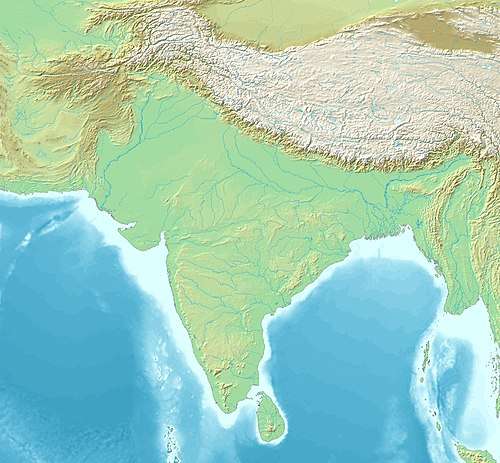 Udegolam Nittur Brahmagiri Jatinga Rajula Mandagiri Yerragudi Sasaram Barabar Kandahar (Greek and Aramaic) Kandahar Khalsi Ai Khanoum (Greek city) | |||
| Year 10[1] | Minor Rock Edicts | Related events: Visit to the Bodhi tree in Bodh Gaya Construction of the Mahabodhi Temple and Diamond throne in Bodh Gaya Predication throughout India. Dissenssions in the Sangha Third Buddhist Council In Indian language: Sohgaura inscription Erection of the Pillars of Ashoka | |||
| Kandahar Bilingual Rock Inscription (in Greek and Aramaic, Kandahar) | |||||
| Minor Rock Edicts in Aramaic: Laghman Inscription, Taxila inscription | |||||
| Year 11 and later | Minor Rock Edicts (n°1, n°2 and n°3) (Panguraria, Maski, Palkigundu and Gavimath, Bahapur/Srinivaspuri, Bairat, Ahraura, Gujarra, Sasaram, Rajula Mandagiri, Yerragudi, Udegolam, Nittur, Brahmagiri, Siddapur, Jatinga-Rameshwara) | ||||
| Year 12 and later[1] | Barabar Caves inscriptions | Major Rock Edicts | |||
| Minor Pillar Edicts | Major Rock Edicts in Greek: Edicts n°12-13 (Kandahar) Major Rock Edicts in Indian language: Edicts No.1 ~ No.14 (in Kharoshthi script: Shahbazgarhi, Mansehra Edicts (in Brahmi script: Kalsi, Girnar, Sopara, Sannati, Yerragudi, Delhi Edicts) Major Rock Edicts 1-10, 14, Separate Edicts 1&2: (Dhauli, Jaugada) | ||||
| Schism Edict, Queen's Edict (Sarnath Sanchi Allahabad) Lumbini inscription, Nigali Sagar inscription | |||||
| Year 26, 27 and later[1] |
Major Pillar Edicts | ||||
| In Indian language: Major Pillar Edicts No.1 ~ No.7 (Allahabad pillar Delhi pillar Topra Kalan Rampurva Lauria Nandangarh Lauriya-Araraj Amaravati) Derived inscriptions in Aramaic, on rock: | |||||